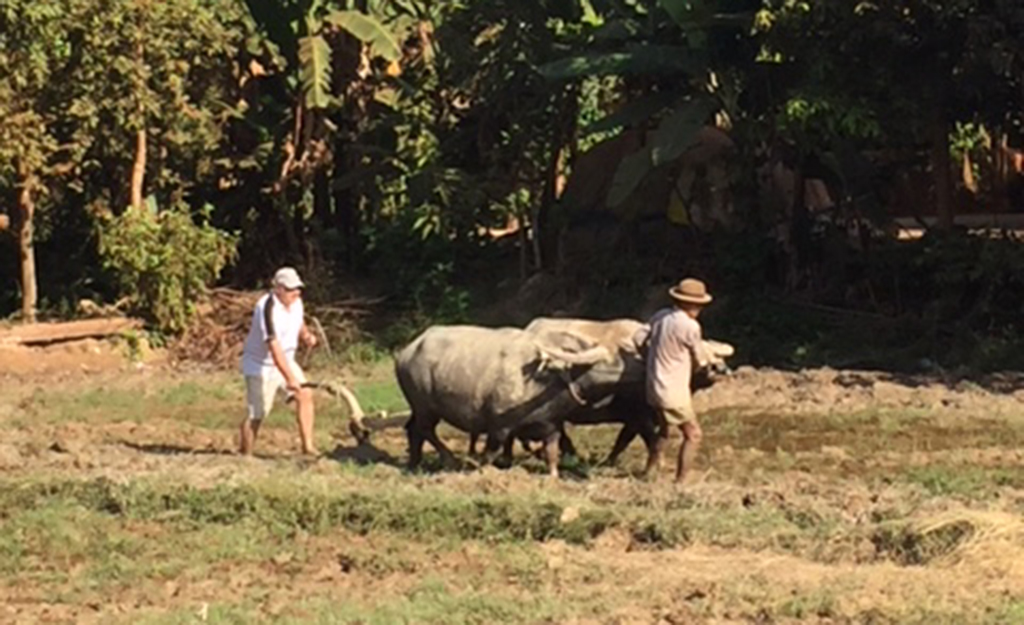By Thom Weir, Senior Precision Agronomist, Farmers Edge
As we approach the New Year, we often reflect on the year past and give thanks for the bounties that we have received. This is magnified with those of you who receive their livelihoods from the land. We are so “at the mercy of” Mother Nature. This was very evident this year. However, the most common remark I heard this year when I asked a farmer how his yields were, was “Pleasantly Surprised” or “Unexpectedly Good”. I chalk up much of these results to the adoption of direct seeding and no-till technologies developed in the ’90s by many industrious farmers, agronomists and engineers. We have come a long way in a short period of time. I think back to the dust storms in the late 80s. I remember my mother lamenting about having to dust almost daily as the clouds of dust rolled through. We also owe a debt of gratitude to organizations such as the ManDak Zero Till Association and the Saskatchewan Soil Conservation Association for their hard work and foresight with regards to soil conservation and no-till.
The discussion of technology leads me to another observation. This fall, I had the opportunity to tour for 6 weeks in south-east Asia including Myanmar, Thailand, Cambodia, Laos and Vietnam. This area has often been referred to as the Rice Bowl of the world. Having now travelled through this area, I can see why. When in the country, you are seldom out of range of seeing a rice paddy. Whether you are travelling through the Irrawaddy Delta of Myanmar or the Mekong Delta in Vietnam, you see these small paddies stretching from horizon to horizon. This is not unlike driving across the prairies during the summer. This, however, is where the technology part cuts in. I saw paddies being plowed with water buffalo, broadcast seeded by hand and being harvested with sickles. I even had the opportunity to “drive” a pair of water buffalo in a rice paddy in Cambodia! While some of the farmers that are using technology are planting using a transplanter and harvesting using a rice combine, these practices seem to be varied in their acceptance. It was interesting to see that at one farm I visited, that he had a stack of bags of 16-20-0-14 fertilizer in the corner of his shed. He told me that this was the basic product they used on their rice along with 14-14-14-12. I also toured a rubber plantation where their form of controlled release fertilizer was interesting. They put what I would estimate as 10 kg (25 lbs) or ½ a bag of fertilizer – 20-10-12 I think – in poly seed bags and lie them between the trees. The rainfall literally dissolves the fertilizer to feed the trees!
So back to technology. Whether we are talking about modern seed varieties / hybrids, herbicide technologies, equipment or more cutting-edge technologies such as variable rate fertility, western agriculture and those involved in modern crop protection are blessed. We have such an array of technologies and such a wide variety of choices. We are also blessed by having such a dedicated industry behind these choices to offer you technical and agronomy support. As well, we have an incredible group of researchers behind these products – both private and public – developing new and innovative products and techniques for you to use on your farm.
I’ve logged 45 years since I entered the Agriculture business as a student. I have had the opportunity to work at the leading edge of such innovations as herbicide tolerant crops, fertilizer placement in direct seeding and finally the whole field of data management and modelling. Wow, have there been changes in those four and a half decades. My twitter handle is #agfeedstheworld but possibly it should be #agtechnologyfeedstheworld.
As you reflect back on 2017 in a couple of weeks, take a moment to also reflect on what you do now on your farm vs what you did even 10 or 15 years ago. Raise a glass and toast the technology that allows you to farm the way you do.
Merry Christmas and all the best to you and your family from my family and me in 2018 and the years to follow. But be prepared to hang on, this ride is only just starting to pick up speed.


